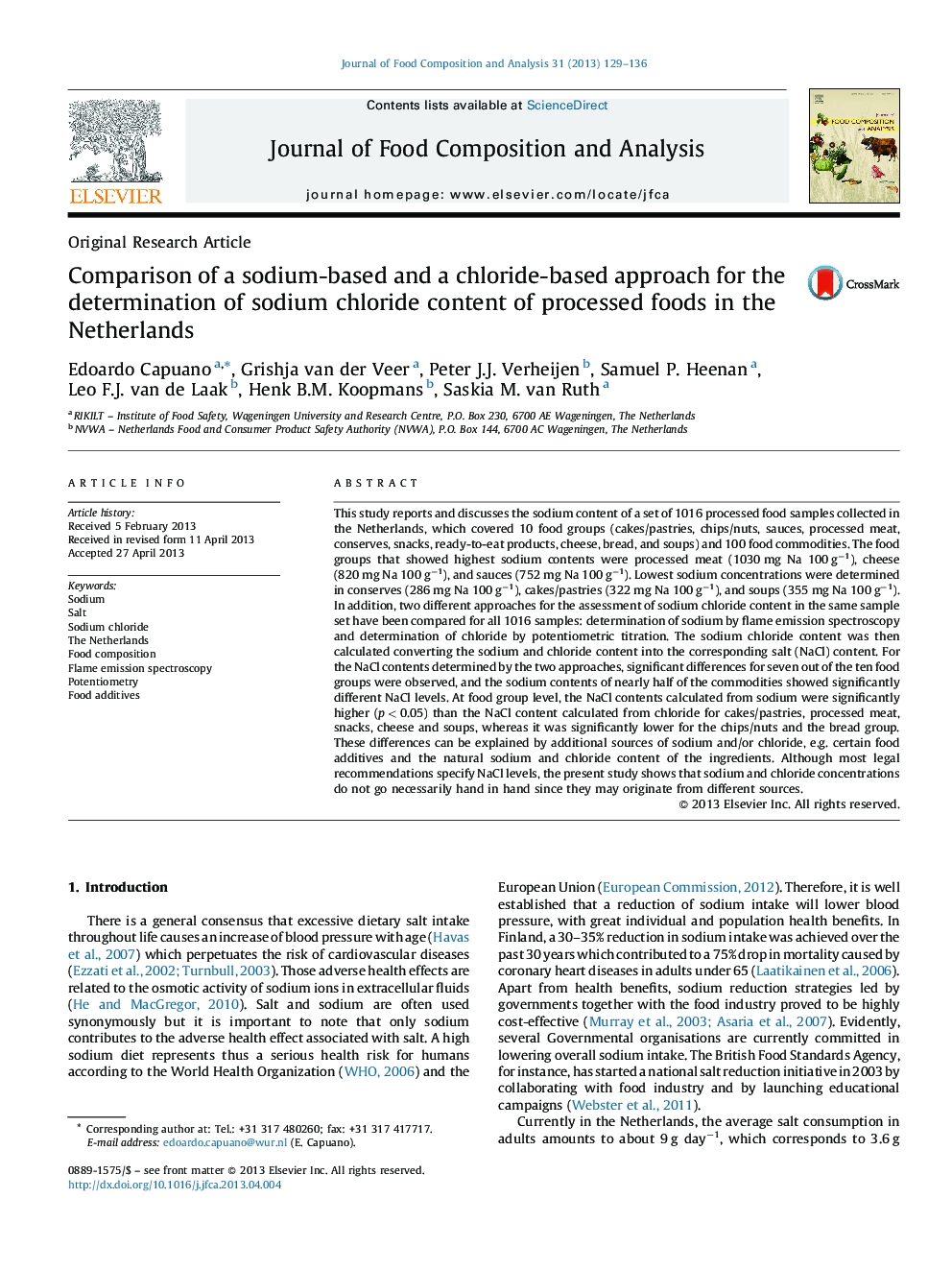| کد مقاله | کد نشریه | سال انتشار | مقاله انگلیسی | نسخه تمام متن |
|---|---|---|---|---|
| 10552773 | 967600 | 2013 | 8 صفحه PDF | دانلود رایگان |
عنوان انگلیسی مقاله ISI
Comparison of a sodium-based and a chloride-based approach for the determination of sodium chloride content of processed foods in the Netherlands
ترجمه فارسی عنوان
مقایسه یک روش مبتنی بر سدیم و یک کلرید برای تعیین محتوای کلرید سدیم غذاهای فرآوری شده در هلند
دانلود مقاله + سفارش ترجمه
دانلود مقاله ISI انگلیسی
رایگان برای ایرانیان
کلمات کلیدی
سدیم، نمک، سدیم کلرید، هلند، ترکیب غذا، طیف سنجی انتشار شعله، پتانسیومتری، افزودنی های مواد غذایی،
موضوعات مرتبط
مهندسی و علوم پایه
شیمی
شیمی آنالیزی یا شیمی تجزیه
چکیده انگلیسی
This study reports and discusses the sodium content of a set of 1016 processed food samples collected in the Netherlands, which covered 10 food groups (cakes/pastries, chips/nuts, sauces, processed meat, conserves, snacks, ready-to-eat products, cheese, bread, and soups) and 100 food commodities. The food groups that showed highest sodium contents were processed meat (1030 mg Na 100 gâ1), cheese (820 mg Na 100 gâ1), and sauces (752 mg Na 100 gâ1). Lowest sodium concentrations were determined in conserves (286 mg Na 100 gâ1), cakes/pastries (322 mg Na 100 gâ1), and soups (355 mg Na 100 gâ1). In addition, two different approaches for the assessment of sodium chloride content in the same sample set have been compared for all 1016 samples: determination of sodium by flame emission spectroscopy and determination of chloride by potentiometric titration. The sodium chloride content was then calculated converting the sodium and chloride content into the corresponding salt (NaCl) content. For the NaCl contents determined by the two approaches, significant differences for seven out of the ten food groups were observed, and the sodium contents of nearly half of the commodities showed significantly different NaCl levels. At food group level, the NaCl contents calculated from sodium were significantly higher (p < 0.05) than the NaCl content calculated from chloride for cakes/pastries, processed meat, snacks, cheese and soups, whereas it was significantly lower for the chips/nuts and the bread group. These differences can be explained by additional sources of sodium and/or chloride, e.g. certain food additives and the natural sodium and chloride content of the ingredients. Although most legal recommendations specify NaCl levels, the present study shows that sodium and chloride concentrations do not go necessarily hand in hand since they may originate from different sources.
ناشر
Database: Elsevier - ScienceDirect (ساینس دایرکت)
Journal: Journal of Food Composition and Analysis - Volume 31, Issue 1, August 2013, Pages 129-136
Journal: Journal of Food Composition and Analysis - Volume 31, Issue 1, August 2013, Pages 129-136
نویسندگان
Edoardo Capuano, Grishja van der Veer, Peter J.J. Verheijen, Samuel P. Heenan, Leo F.J. van de Laak, Henk B.M. Koopmans, Saskia M. van Ruth,
